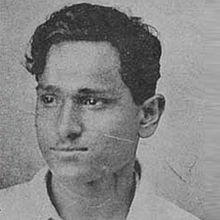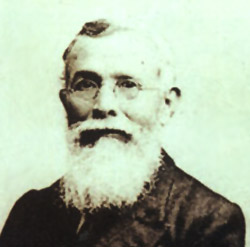NAME : Batukeshwar Dutt
FATHER : Goshtha Bihari Dutt
DOB : 18 November 1910
DIED : 20 July 1965
ALIAS : BK Dutt, Battu and Mohan
MOMENTS AND PROTESTS : bombed along with Bhagat Singh,member of the Hindustan Socialist
Republican Association, Quit India Movement
Batukeshwar Dutt was an Indian revolutionary in the early 1900s. BK Dutt is best known for having bombed, along with Bhagat Singh, the Punjab Legislative in the Assembly on 8 April 1929. After his arrest, he and Singh were instrumental in initiating a hunger strike protesting against the rights and state of Indian political prisoners.Batukeshwar Dutt was also known as BK Dutta. He was a member of the Hindustan Socialist Republican Association, one of the first Marxist parties in India.
Batukeshwar Dutt, also known as B.K. Dutt, Battu and Mohan, son of Goshtha Bihari Dutt, was born on 18 November 1910 in the village Oari in Nani Bedwan district, and lived also in Khanda and Mausu in Burdwan district in Bengal. He graduated from P.P.N. High School in Kanpur. He was a close associate of freedom fighters Chandrashekhar Azad and Bhagat Singh. He met Bhagat Singh in Kanpur in 1924. Working for the Hindustan Socialist Republican Association in Kanpur, he learned how to make bombs.
The British Government introduced the Public Safety Bill & the Trade Dispute Bill in the Central Legislative Assembly. They gave more power to the British Government and the police against Indian revolutionaries and freedom fighters.The bills were defeated in the Assembly by one vote. However, they were enacted by an ordinance, claiming that the ordinance was in the best interest of the public. To protest against this ordinance, the Hindustan Socialist Republican Association decided to explode a few bombs in the Central Legislative Assembly. Chandrashekhar Azad, the leader of that revolutionary movement, was not in favor of exploding bombs. However, others in the party persuaded Azad to accept Bhagat Singh's plan, and Azad selected Batukeshwar Dutt to accompany Bhagat Singh and throw the bombs in the Assembly.
On April 8, 1929, Bhagat Singh and Batukeshwar Dutt gained access to the visitors' gallery of the Assembly. At about 11 AM they raised the slogan "Inquilab Zindabad" [Long live the Revolution] and Batukeshwar Dutt threw two bombs onto the floor of certain areas of the Assembly which were vacant and not occupied by anyone.While the bombs were exploding, Bhagat Singh threw leaflets down where members of the Assembly were present. The leaflet included a statement that "It takes a loud sound to make the deaf hear." The bombs, as planned, did not kill or hurt anyone. This part of the plan, claimed by Bhagat Singh and Batukeshwar Dutt during their trial, was substantiated both by British forensic investigators, who confirmed that the bombs were not powerful enough to cause any injury or kill anyone, and by the fact that the bombs were thrown away from the people on the floor. Bhagat Singh and Batukeshwar Dutt quietly courted arrest after the incident. They were famously defended by M. Asaf Ali, but were both sentenced to Transportation for Life on June 12, 1929.by the day
Along with Bhagat Singh, Batukeshwar Dutt was tried in the Central Assembly Bomb Case, and was sentenced in 1929 to life imprisonment by the Sessions Judge of Delhi under Section 307 of the Indian Penal Code & Section 4 of the Explosive Substances Act. He was deported to the Cellular Jail in Andaman which was infamously known as Kala Pani (Black Waters). He also faced trial in the Lahore Conspiracy Case but was found not guilty. He participated in the two historic hunger strikes in the Cellular Jail during May 1933 and July 1937. Batukeshwar Dutt was repatriated to the mainland in 1937, and was later released from the Bankipur Jail in Patna in 1938.
After his release from prison
Batukeshwar Dutt contracted tuberculosis. He nonetheless participated in
the Quit India Movement of Mahatma Gandhi and was again jailed for four
years. After India gained independence, he married Anjali in November
1947. It is sad that independent India did not accord him any
recognition, and he spent his remaining life in penury away from
political limelight, a forgotten hero.
Batukeshwar Dutt outlived all his
comrades and died on 20 July 1965 in the AIIMS in Delhi after his long
illness. He was cremated in Hussainiwala near Firozepur in Punjab where
the bodies of his comrades Bhagat Singh, Rajguru and Sukhdev were also
cremated many years ago. He was survived by his only daughter, Mrs.
Bharti Bagchi, in Patna where his house was situated in the Jakkanpur
area.














